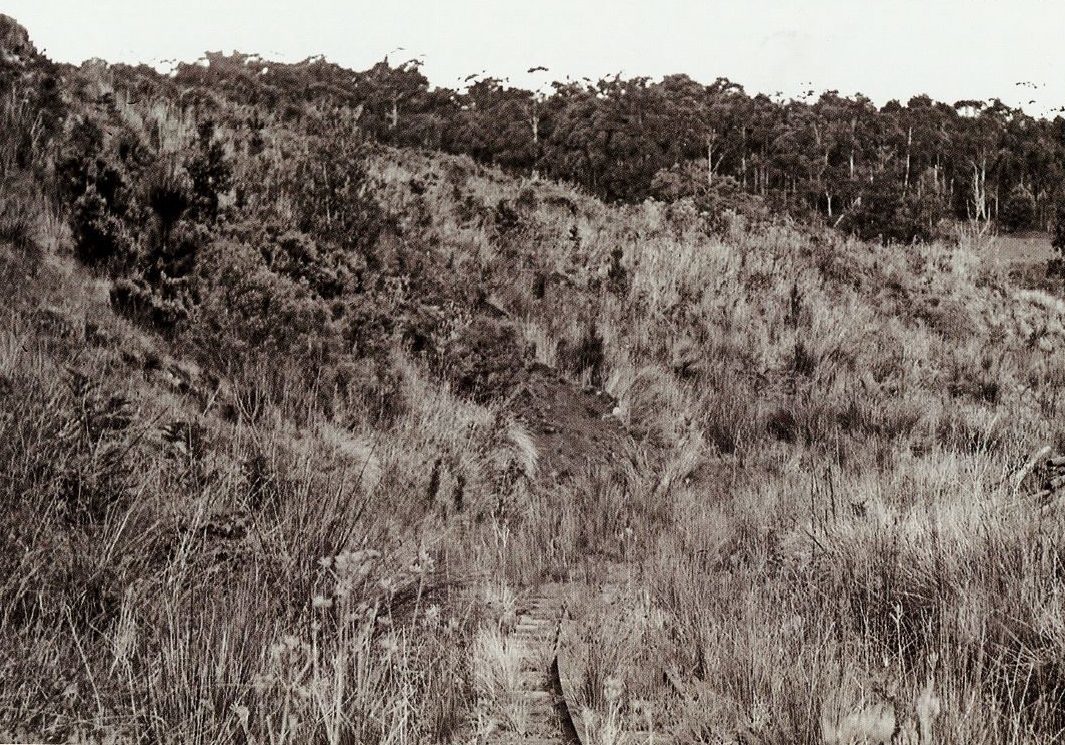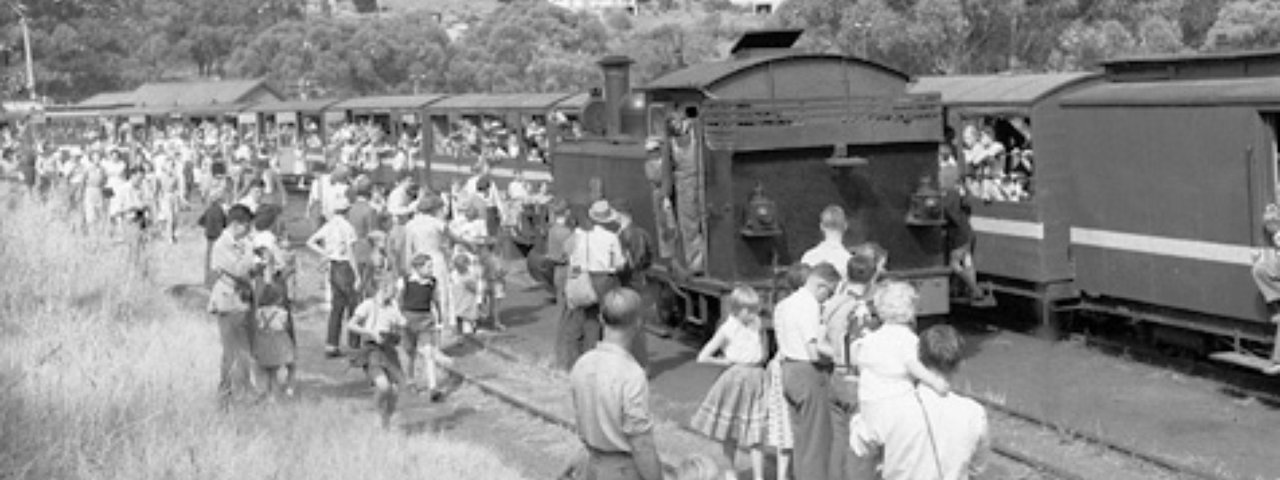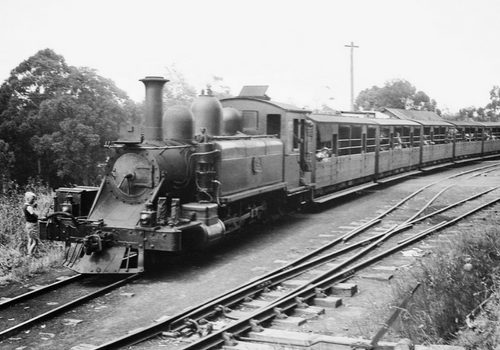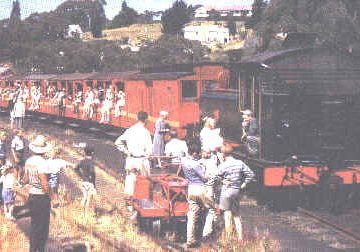The History of Puffing Billy
Puffing Billy Railway was one of four low-cost 2’6″ (762mm) gauge lines constructed in Victoria in the early 1900s to open up remote areas. The present line between Belgrave and Gembrook in the Dandenong Ranges outside Melbourne is the major part of the line which opened on 18 December 1900. It was one of four opened throughout the state in the early 1900’s as a low-cost alternative to a broad-gauge (5’3”, 1600mm) gauge railway.
The 18.2 mile (29km) Upper Ferntree Gully to Gembrook narrow gauge line was always a scenic attraction to the people of Melbourne, who began travelling on excursion trains for day trips and weekend holidays in the hills during the railway’s earliest years. The increased use of the railway for this purpose saw the open “NBH” class carriages built to cater for these passengers.

Photo: Excursion train about to leave Upper Ferntree Gully between 1908 and 1910. Before the popular NBH-class carriages were built, goods wagons were converted. Examples of these can be seen behind locomotive 5A.
The train was the lifeline for people living in the hills. In addition to passengers, the train carried mail, parcels, newspapers, perishables, home supplies, farm requisites, livestock, and general goods away from Melbourne. On the return journey, the train carried timber and farm produce, especially potatoes grown in the Cockatoo-Gembrook area.
In 1953, a landslide blocked the track. This, combined with continued economic losses, resulted in the line being closed in 1954.

Photo: The 1953 landslide was a defining event in the history of both the Gembrook line and the Puffing Billy Preservation Society. This view towards Gembrook was taken on 3 November 1956.
The present-day success of Puffing Billy has evolved from the humble beginnings of its rescue by determined members of the Puffing Billy Preservation Society, which was formed due to the public interest.
Volunteers with the blessings of the Victorian State Government and the assistance of the Citizens’ Military Forces, by-passed the landslide and reopened the line from Belgrave to Menzies Creek in 1962, Emerald in 1965, Lakeside in 1975 and finally to Gembrook in October 1998.
“If the line had been officially closed and the gates locked, then it would take heaven’s own movement to reopen the railway.”
– David Bourke







